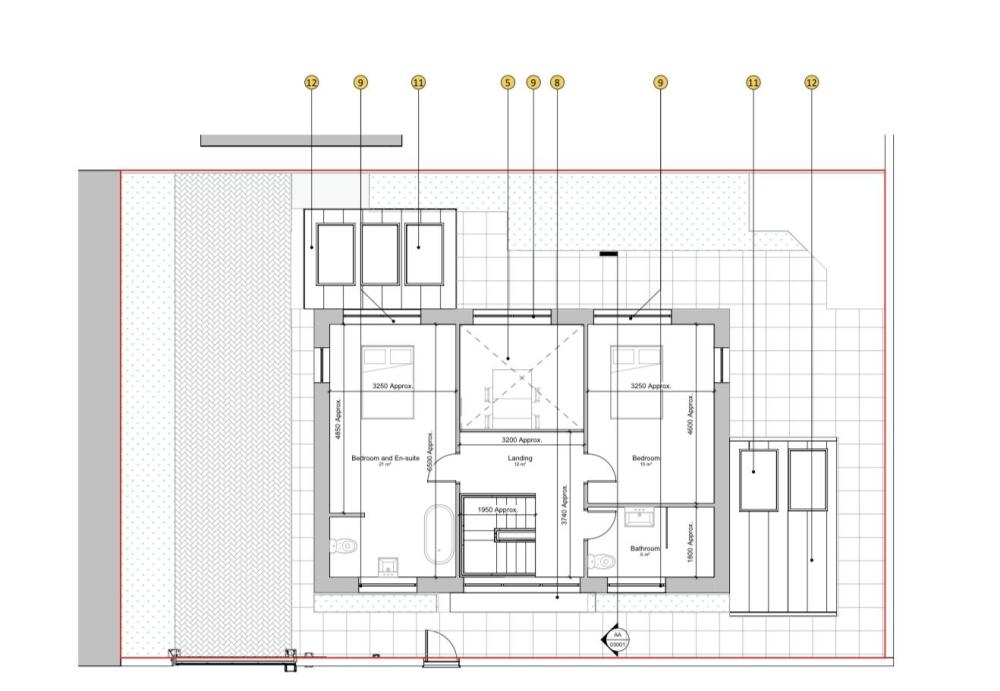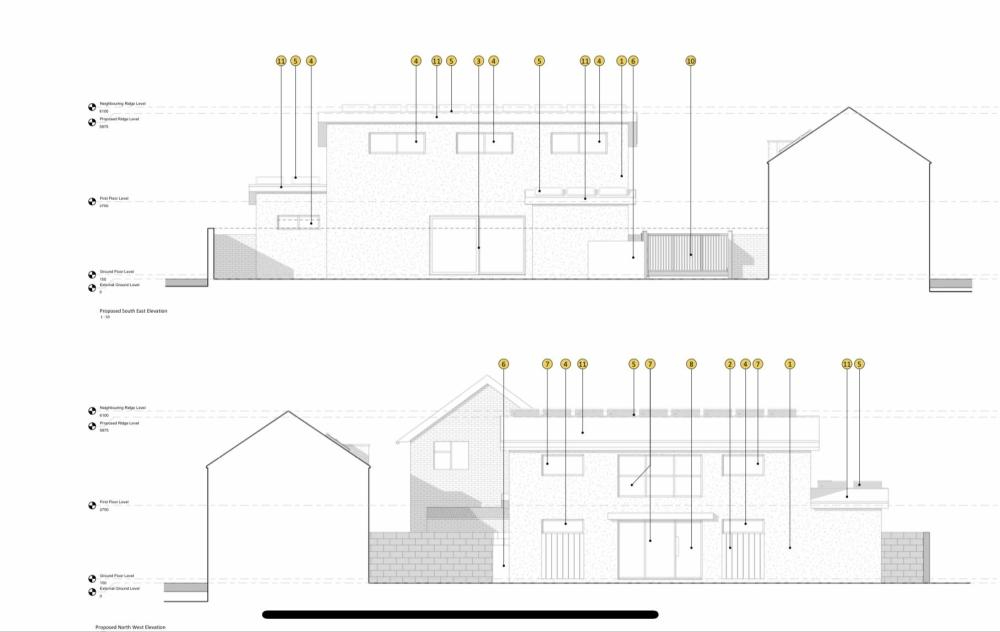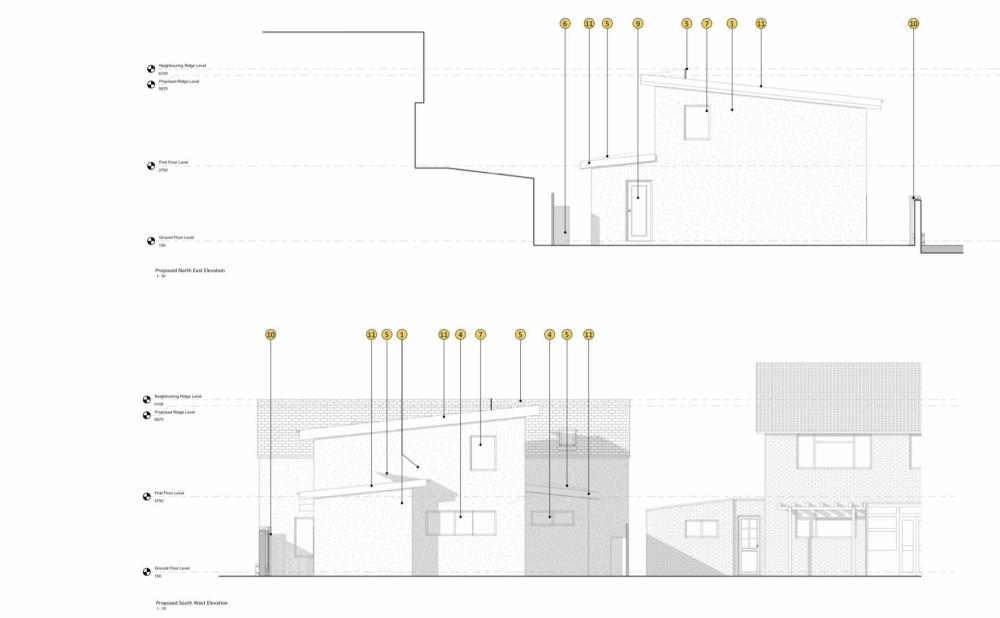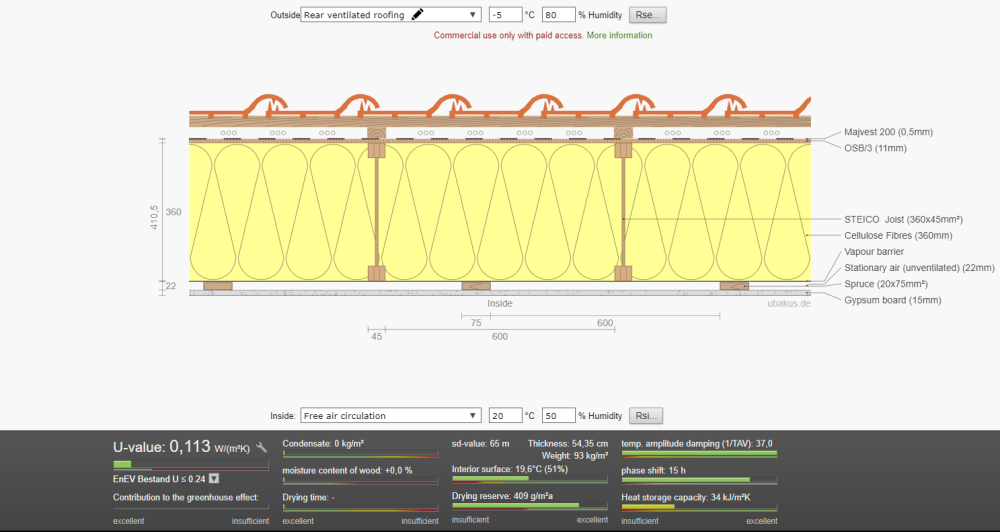Leaderboard
Popular Content
Showing content with the highest reputation on 11/28/23 in all areas
-
Hi @PXR5 You are of course free to leave the forum if you wish, but maybe once things calm down a little you’ll reconsider. People can be a bit pedantic but tbf sometimes posts are also a bit confusing. It’s always best not to take anything said on the internet or forums too personally. I think you’d find the forum useful if you are able to take the rough with the smooth. I’ve locked the thread for the moment.2 points
-
I think it would be helpful if @PXR5 posted the anonymised text of the email from BC so it is clear what they have requested and why.2 points
-
>>> Some PV guru's could probably enlighten me. Hardly a guru, but each PV panel string usually sits on one central inverter input (or MPPT) and will be limited to the output current of the lowest panel - the panels are literally strung together in series. A string is usually limited up to, say, a dozen panels and is limited to the max inverter input voltage. Total voltage is approx. # panels x 40V. So shading one panel will reduce the output of all the panels to the same extent. With local inverters, there's usually one inverter for each panel (they sit on the roof too) and there's no such limitation. Of course, this option is usually more expensive.2 points
-
You may like to consider a “Critique our design” type post before plans submission. Though some responses may not necessarily be helpful (eg “I don’t like your style of house”) you’re likely to find members who can make helpful or practical observations or tweaks that even the best architect or client will have missed. Often this is because we have included or failed to include certain features in our own self builds that we are now living in. If you chose to do this I think it’s helpful to include a brief overview of your relevant circumstances eg family, dogs, WFH, relevant interests etc. blank out any personal info on the drawings. If uncertain about this just do a forum search on “critique” to see previous posts to see if you feel such a post would be helpful to you. This forum is not like Facebook etc where aggressive random people abuse posts. You’ll find 99.99% responses are folk trying to help, and ultimately you have 100% control of whether to accept of ignore any suggestions.2 points
-
Generally, a air source heat pump will work down to pretty close to the expanded refrigerant gas temperature, which could be -27°C or more. Practicality is a different issue. The defrosting is not caused by the external air temperature, you get air conditioning units frosting up in the tropics. Your fridge/freezer also frosts up. The frosting is more to do with the absolute humidity, the greater the mass of air in a given volume, the more there is to settle on the external unit's heat exchanger. Liquid water has its greatest density at 4°C. It is a quirk of the UK weather that we have high humidity at temperatures below 8 or 9°C, this makes for a relatively high dew point. Once below 0°C, the humidity drops as liquid water precipitates out of the air. This is not instant, it can take a few days of sub zero temperatures, which we seldom have in England. Because of this quirk, we have to be careful about judging the performance of an ASHP. It really comes down to how often the outside air temperature is between 7°C and 0°C, and what the humidity is during those times (and the associated air pressure).2 points
-
@iceverge kindly looked at this for me and replied as below. As they said any other comments are welcome.. the two add on ‘pods ‘ as I call them are because I will never be granted a bigger overall house from planning but they may allow the little extra single story ‘pods’ which would help. So here is the message . Which I’m very grateful for. This forum is invaluable I’ve learnt so much from my posts . Thanks to everyone Nic Here we go. I've thrown about an hour at this drawing. Its like a cardboard cut out template of a house PHPP uses external dimensions unlike SAP. NE wall 46.7m2 Window 3.3m2 NW wall 51.7m2 Window 14.5m2 SW wall 46.1m2 Window 4m2 SE Wall 61.9m2 Window 12.3m2 Floor 94m2 Roof 94.6m2 Your current wall thickness is 400mm. Roof is 350mm. This would result in U values of about 0.16W/m2K with ICF and a joisted roof. Lets assume you can install a floor as thick as you wish with a U value of 0.1. Windows at 1.1w/m2k installed. I note you're in the south coast. Lets assume zero as a minimum temperature. A good airtightness score and MVHR. Take any internal heat gains to be cancelled out by minor thermal bridging and the inefficacy of the MVHR. That leaves us a simple enough sum to do. Area X U value X delta T = Heat Loss Total Your heating load as stands would Roof: 94.6x0.16x20= 302w Floor 94 X 0.1 X 15 = 141w Walls 206.4 x 0.16 x20 = 660w Windows 34.1 x 1.1 x 20 = 750.2 W Total heating demand 1853 w. The foot print is 94m2 and the floor area is about 150m2. You're at roughly 12.5W/m2K specific heat demand vs the Passivhaus limit of 10W/m2K. There's a couple of things you could do to adjust. The small add ons to the south and west adddisproportionately more external surface area than the floor area. For instance the one to the west adds only 5.5m2 of floor area but 131W of heat load or 24W/m2. It's twice as bad as the average of the house. Designing from scratch they'd be a far more expensive option than just making a house a pure 4 sided box or even a full height "T" or "L". I understand you are size limited but slightly thicker walls or roof would help. Only marginally. As you can see even good triple glazed windows loose a tremendous amount of heat. More than all the walls combined. You have 14m2 of windows on the North wall. This will loose heat all year around as unlike the South facing window's they'll never gather energy. ( Nett loss) Consider making them smaller. For mainly this reason it's very unlightly you'll be near the annual heat demand of a passivhaus. I would guess you'll be about 4000kWh per year. Assuming a well functioning ASHPand 25p/unit this will translate to about £250/year for space heating. A passivhaus might be £150. Over all, if built to good standards of airtightness and thermal bridging you'll have a very warm house.2 points
-
Before you do anything else at all, could you answer this question please? Have you bought the property yet, or made an offer ? The very first thing - and at any event BEFORE purchase - you must establish how the foul drainage will work. And - if you cannot connect to a mains sewer - how will that drainage system be powered? In relation to the property, how far away is it from the barn? ( see @Temp's comment above) The response, "Oh, we'll put a digester in" is not good enough. You need to follow The General Binding Rules ( look them up)... Where will you discharge the 'liquor'? Is there a local stream? Read up on all the nightmares about foul drainage here on BH. If someone says that you can 'share' their ('our') sewage system - HERE-BE-DRAGONS. (... detail later if you need it) Everything else can wait. You must instruct your solicitor (or professional handling the purchase) to get definitive, clear replies to the questions above. Watch for 'spin' in the replies you get We will be happy to review the various responses you are given. You might usefully look at the planning history of the barn: how many times has planning permission been applied for? What Conditions have been applied to the property2 points
-
Last year was our first winter in the new house and I was getting used to the heatpump. Ahead of last December's cold snap, I was running the heatpump as I am now- ~34c flow temp, economy 7 hours of 1am to 8am. That was perfect , until it got cold! It was a day or two before I really noticed that house was losing a fair bit more heat over 24hrs than the heatpump was providing in its 7 hours. So, turned it on to an 18hour programme. All good? Nope, because the house had lost enough heat energy, and it was cold and damp outside, so that the heatpump really struggled to bring the temp back up to our desired comfort level. Lots of defrost cycles etc. So this time, I've had the thermostats set 1c higher than we did last year and yesterday I had it running during the day, and will do again today. Basically, I'm pre-charging the house with a little bit more heat energy, and preempting the additional demand buy changing the programme to 18hours before the cold snap bites. Might be of some use to use to anybody else who tries to get by with their heatpump on off-peak hours only. Of course, running 24x7 on weather comp would mitigate all this....1 point
-
1 point
-
I am positive I will be seeking advice from many members in this group, I am pleased to have found such a knowledgeable lot!1 point
-
We have looked at part O and have factored window size, location and sun/shading into the design. I suspect further refinement might be needed but I think we’re nearly there1 point
-
I’ve just gone and looked up some of those posts by Brendon. Very interesting esp some of those live videos with data. Im tempted to get my system re plumbed with buffer removed now my system is fully de-zoned.1 point
-
So after all that not building control then. Planning enforcement instead. Obviously reacting to neighbours' compliants that work is underway. If the retaining wall is of sufficient scale to be "engineering works" then it requires planning permission. If it is shown on your planning application then what is said in the letter is fair. You are starting at your own risk. If that piece of paper doesn't materialise or turns up as a refusal after all (never trust verbal assurances of approval) then what is currently an informal warning could become something more unpleasant. Personally I'd respond to enforcement explaining you having to do some work to stabilise the ground but you will now wait until formal approval arrives. Always best to engage if only to delay action from the other side!1 point
-
Yes, but legacy environmental damage is important in the scheme of things. It is why the UK really has to be a world leading in green technology as we have to put right our historical wrongs somehow.1 point
-
So it’s Planning… not Building Control 🙄1 point
-
1 point
-
Download the heat loss spreadsheet from here. But before you start to fill it in, decide how much better that standard building regs you want to be. Building Regs area minimum, and like a car, no one wants a City Rover.1 point
-
Have you looked at part O yet, it’s the ventilation one and window size and location are big considerations in Part O1 point
-
Some of us take our socks off in both the shower and bath. But bathing habits vary by county, I understand.1 point
-
@Temp is being diplomatic. Get a properly constituted Percolation Test done even if someone tells you one has been done. The job should take about 2 person days, and cost about £350. The softer and smellier the job, the higher the chance of dealing with charlatans. Have a read of my blog. (In West Lancs) it is quite normal for people in this sector to lie. Nobody polices the results. Digger per day cost - £190 + transport (£50) + VAT Day rate for genuine ground worker £150 Ask for photographic evidence.1 point
-
I'm just off to do a stir-fry on my induction. I like, but wife keeps saying she likes gas more. But she doesn't cook every day. I always found gas way to slow to heat stuff up.1 point
-
Good thinking. It makes a difference but not as much as you'd thing at very low pitch angles. Here's the north facing one from PVGIS. Here's the South . The difference is only about 300kWh/year. It'd be easily compensated for by adding a single extra solar panel. @Nic I would consider moving all the PV to the roof in one block. Less lightly to suffer differential shading which I gather it doesn't like unless you have some clever inverter gizmos. Some PV guru's could probably enlighten me.1 point
-
You could put cellulose in the service void too but it'd mean cutting holes in the plasterboard to blow it in and a second visit for the installer truck. The main benefits would be already had in the main 220mm depth of the rafters. Namely, decrement delay (phase shift, airtightness enhancement and the ease of install around awkward cuts of timber etc. ( Not a huge factor in this roof) Mineral wool is cheap and if you correctly space the counter battens for the service void can be very quickly fitted. As @Nic mentioned budget I am conscious that posi joists are probably 5 times the price of cut lumber and a special order item rather than an off the shelf thing from a merchants. Beware 220mm timber rafters will need intermediate support. Re the U-Value of 0.14. It's just what emerged given the space constraints. The OP is limited in their height build-up to 350mm. Trade off's need to be had between the cost of materials and performance. A 400mm I beam with cellulose and woodfiber sheathing would be ace but probably 3 times the cost. Similarly PIR between the rafters with PIR underneath would appear cheaper and have a lower U value. However it's very tricky to install the PIR accurately. Differential movement of the timbers and PIR over time will result in gaps and thermal bypass of the insulation. There'll be loads of waste from the PIR boards cuttings. It has a worse decrement delay resulting in poorer summer performance. It'll be much much worse from a noise and airtightness perspective.1 point
-
I'm in East Anglia. Lot of clay here and soakaway don't always work. The didn't on my site but there is a piped ditch along the edge of the road we were allowed to discharge into (after offering to install a rain water recycling tank). Fortunately we have mains sewer for foul water. Definitely ask the seller if a Percolation test has been done or consider getting one done. Perhaps ask the seller if he has access to a digger as that would reduce cost. They will ask if you have one when you ask for a quote.1 point
-
1 point
-
Go and buy a couple of cheap portable Ikea induction hobs like this one https://www.ikea.com/gb/en/p/tillreda-portable-induction-hob-1-zone-white-70493503/ or even the double one https://www.ikea.com/gb/en/p/tillreda-portable-induction-hob-2-zones-white-90497166/ and try them out for a while. Obviously make sure you have suitable pans. Once you've spent some time using them, I'm sure demands will change. I once had no choice either 😉 but we do have a permanent induction hob now. One of the best things is how easy it is to clean compared to gas!1 point
-
LVT over SPC everytime. LVT is permanently bonded and has a very small failure rate, SPC is a floating floor and is much more prone to failure, broken joints, over expansion etc. LVT is fine with UFH, all the glues are rated to a slab temp of 35C, which is very unlikely to be exceeded, unless you have a very thin gypsum screed and a very high flow temp on the UFH. Its all the same underfoot as porcelain, if you want something "softer", look at engineered wood.1 point
-
Welcome. I hope you don't mind me asking : why are you getting drawings done before applying for PP? Do you already have Outline Planning Permission? If so, then thats fine. I am trying gently to suggest that if you haven't got Outline PP, then presenting detailed ( = expensive) plans means that the LPA Officer has more opportunity to reject your application. Have you had the chance to read this yet? https://www.gov.uk/guidance/making-an-application#types-of-application1 point
-
Before you do apply for planning, have you done a decent heat loss analysis? It could change your plans.1 point
-
True, but claiming that this fuel is sustainable is not a step forward. One thing that could be done to improve the emissions of flying is to reduce the number of flights. This is not the same as reducing the number of seats. If airlines were to share their bookings, then on most busy routes you could probably save one flight a day.1 point
-
And they were, by today's standards, horrible to drive. When I was a teenager, I had a Hillman Imp, 725 kg. It never felt safe, was dreadfully slow (though quicker than a Mini 850), handled peculiarly and did about 45 MPG. My current car did 66 MPG with a boiling engine. We could make cars light and safe, make them out of well designed composite plastic, but I don't think that anyone wants to pay £80k for a car that cannot take 5 people and luggage.1 point
-
Well, after 4 nights of sat next to the meter (nothing happening) then a couple nights where it did happen and I slept through it.....then £40 on appliance monitoring equipment..... FOUND IT!!! Somehow I had 'prehea / optimum start' enabled in our utility room zone, which is a zone which never really comes on due to plant room...with the warm cylinder, drying clothes etc it was also a room that isn't directly connected with external temperatures. Checking the heatmiser app for this room shows the preheating kicking on at 3am...ahead of 4am when all the heating zones really kicked in! On the bright side...at least I know Heatmiser has an optimum heat capability1 point
-
I don't think that BEVs are that far off comparable ICEs these days. A Tesla Model 3 long range has a curb weight of 1840 kg. BMW 330d xDrive G20 1820 kg. They are comparable cars.1 point
-
@Iceverge Thanks for the very clear 'heat loss in a nutshell explanation'. Very useful for everyone, I think. Love the colourful fold-up cardboard cutout version of the house design - was that used somewhere, or just to illustrate the surface area? I just bought PHPP yesterday, so @Nic thanks for bringing this subject up at this time1 point
-
They should be okay. The point of removing the link is to see which one is triggering. When you know that, swap them over and see if the same one triggers again. If it is one in the same location triggering after swapping them it is time to look very hard for a real problem.1 point
-
It really depends on how large the conservatory is, and what the mass air flow is. It is really just a modification of a Trombe Wall, and they are brilliant, so brilliant we all have them in every house in the country, and no heating bill what so ever.1 point
-
As there are only 2, disconnect the link wire at one end. Then you will know which one is going off as it won;t trigger the other. What make and how old? It might just be time to replace them. Before anyone asks, I only ever recommend Aico smoke alarms.1 point
-
Yes, the same sort of greenwash that says burning trees is good.1 point
-
1 point
-
Funny, I've been reviewing last year's data and comparing it to now, myself. We've got the woodstove now which adds flexibility. A pleasant fire of an evening adds a considerable amount of energy to the TS. Whilst warming the downstairs directly, it also means there's enough heat in-the-tank that the upstairs rads can warm without the ASHP being demanded every time. I've increased the setpoint of the downstairs thermostat by 1C and started it a bit earlier so it's actually running and demanding heat by the time the E7 period starts. That extra bit of energy into the floor really stabilises the whole-house temp. I've also taken a degree off the overnight flow temp. I'm running the immersion diverter on timed boost every morning just before getting-up time for 30 mins. The heat pump is working noticeably less hard and there are far fewer defrosts1 point
-
Went for one of these, which is now here. Looks very good for £50. Two batteries, two chains, oiling facility, 6" edge.1 point
-
I suspect most of us (well me at least) just start on the mid speed of the pump, and if it all works well, slow the pump down. My aim was to run the pump at the slowest setting (quietest) that would deliver the required heat to the house. Having first changed the cheap noisy pump for a Wilo.1 point
-
welcome to EA, if you are in East Suffolk, be warned, planning is vicious, just ask a few people on here who have appliced there1 point
-
Are you doing the works yourself or contracting it? For External Wall Insulation there is a test which installers do called the pull off test, they will use adhesive on a small piece of insulation, apply it, let it dry, and then pull it off and see which bit fails. It should be the insulation, but if it isn't then other remedial works may be needed before installation. In reality the insulation won't fall off, but you risk it delaminating from the substrate, which causes thermal degredation and bypass.1 point
-
1. Talk on site and discuss 2. follow up with an e mail 3. Follow on with drawings, specification, contact numbers for local council, copies of any consent you have to connect to sewer. Whitin the first minutes of driving away from a meeting I would probably get another call from another client follow up everything, I’m afraid your just another punter in the long list of punters. The squeaky wheel gets the oil.1 point
-
Carpet, underlay. 75mm concrete screed. 150mm hollocore concrete planks. 100mm ish dropped MF ceiling. 12.5mm plasterboard and skim. Zero air paths between rooms. Dead quiet. I can occasionally hear the dishwasher at night. My wife can't but I'm convinced that's coming up the eps beads on the cavity from window to window.1 point
-
1. Not many 2. Some, and some on here know more than I do. I say insulate internally. Presumably you have a solid 9" wall. The outside already gets very cold. The main solution is to ensure that the wall sheds liquid water. No drips, tidy pointing, drains or slopes taking water away frlm the walls.1 point
-
Can you not turn individual things off for one night (going to bed till getting up) and see if it makes a difference? ( @SteamyTea had a fridge that used a lot of lecky and needed replacing).1 point
-
We used isover 50mm acoustic rolls and they seem to be performing well. Little or no noise transmission between rooms (70mm metal studs, OSB and 12.5mm board)1 point
-
1 point


















